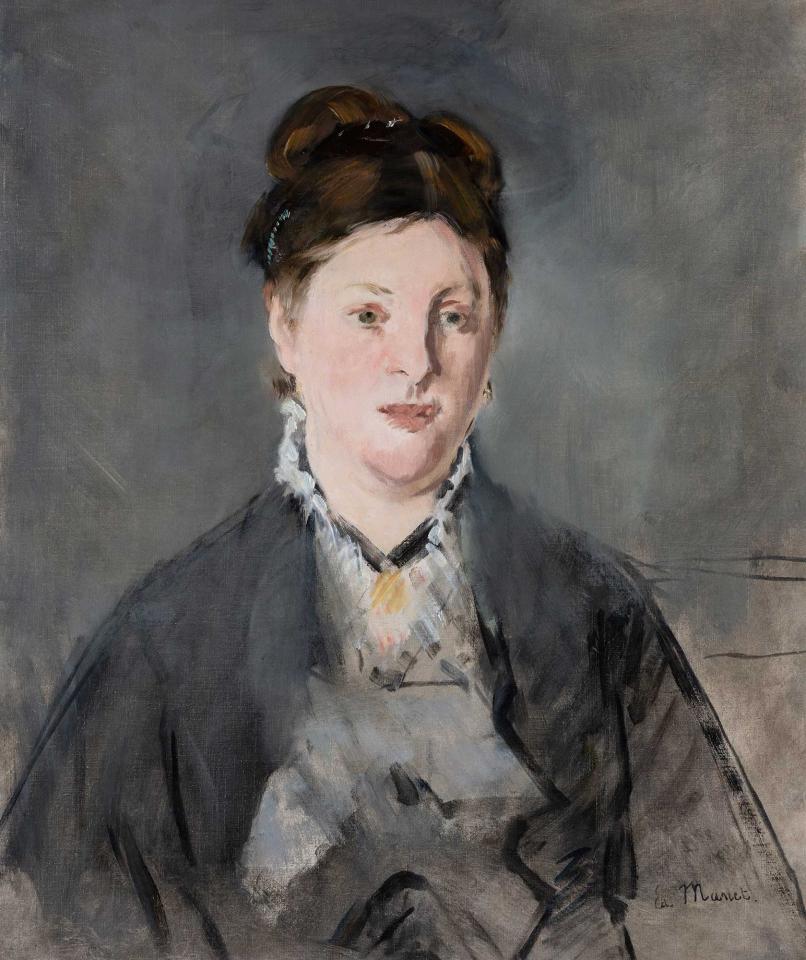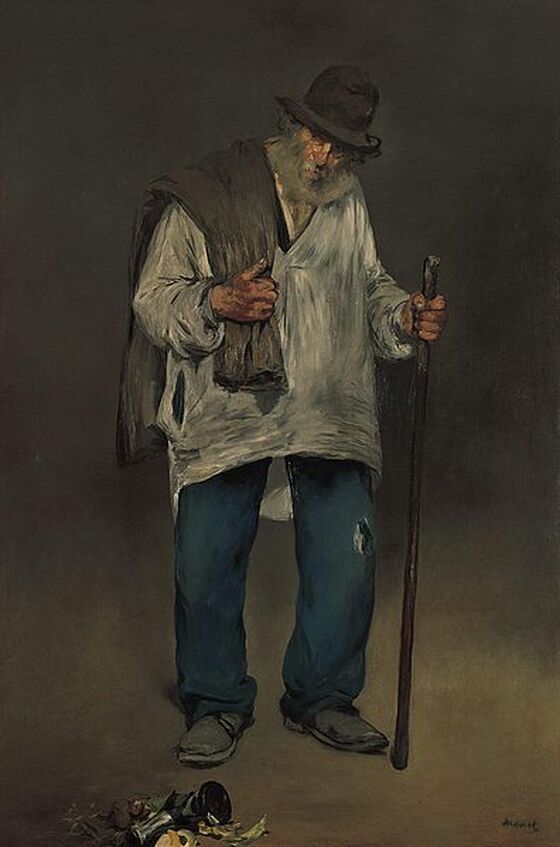“Manet: Three Paintings from the Norton Simon Museum”As the name indicates, “Manet: Three Paintings from the Norton Simon Museum” at the Frick Collection in New York City presents three paintings by Edouard Manet on loan to the Frick from the Norton Simon Museum.
Manet was born in 1832 into a prosperous upper class family in Paris. His father was a magistrate expected Edouard to follow him into the law and was set against his son becoming an artist. An uncle, however, encouraged Edouard's interest in art. After Edouard failed in an attempt to become a naval officer - - an acceptable career for someone of his background - - his father relented and Edouard was given the means to becom an artist. Considered to be one of the fathers of modern art, Manet influenced the Impressionists, the Post-Impressionists and most of the major artists of the 20th century. During his own time, Manet was considered a rebel for at least two reasons. First, he did not paint in an acceptable way. His style was looser, less detailed and less polished than academic painters of the time. Indeed, many in the art establishment criticized his works as unfinished. It sometimes bordered on the abstract. Second, he did not paint acceptable subjects. Instead of historic scenes and legends, Manet depicted modern men and women in cafes. While academic artists painted river nymphs coyly cavorting, in “Olympia” Manet painted a contemporary courtesan staring unashamedly at the viewers. In short, Manet was painting modern life. Still, Manet tried repeatedly to interest the art establishment in his work. He often submitted works for the Salon, the prestigious official exhibition held each year by the Academie des Beaux Arts. Often Manet's works were rejected, others were accepted but received harsh criticism. However, over time, more and more artists recognized his talent and innovation. Even the academy began to come around towards the end of his life but the academy did not hold an exhibition of his works until after his death. The three Manet paintings in this exhibition represent different aspects of Manet's work. The largest and most polished is “The Ragpicker.” Its subject is an old, bearded man dressed in shabby clothes. However, in his face there is wisdom born of hardship and in his strong hands strength The fgure is divorced from his surroundings and instead is set against a grey backgound, which emphasizes him as an individual. In this painting, Maet was making a comment about modern life. At the time it was painted, many poor people living in the slums of Paris were being displaced by Baron Haussmann's massive urban renewal scheme. In this picture, Manet is reminding his viewers that these people have value. The second painting in the exhibition is a still life showing a number of fish laid out on a table. Here, we see Manet's virtuosso skill as a painter in the rendering of the skin of the fish and in his choice of colors. He is observing everyday life. “Still life with Fish and Shrimp” is impressive art work but at the end of the day, it is still a picture of dead fish. Whereas the second painting may not have much to say, the third, “Madame Manet,” speaks volumes. It is a portrait of the artist's wife. Done loosely with little modeling, a few strokes of black indicate the clothing and a few dabs of paint indicate the features of the face, some of which may not be in their anatomically correct location. However, the painting conveys the affection the artist must have had for the sitter. She comes across as bright, loving and good-natured. Manet has captured and presented what is essential about his sitter. Further development of the image was unnecessary. All three paintings convey the energy and excitement that inspired Manet's Impressionist contemporaries and subsequent artists. Their presentation in the grand Oval Room of the Frick apart from the museum's own collection, focuses the viewer's attention. As a result, Manet's brilliance stands out. |
|
Art review - Frick Collection - Manet: Three Paintings from the Norton Simon Museum

